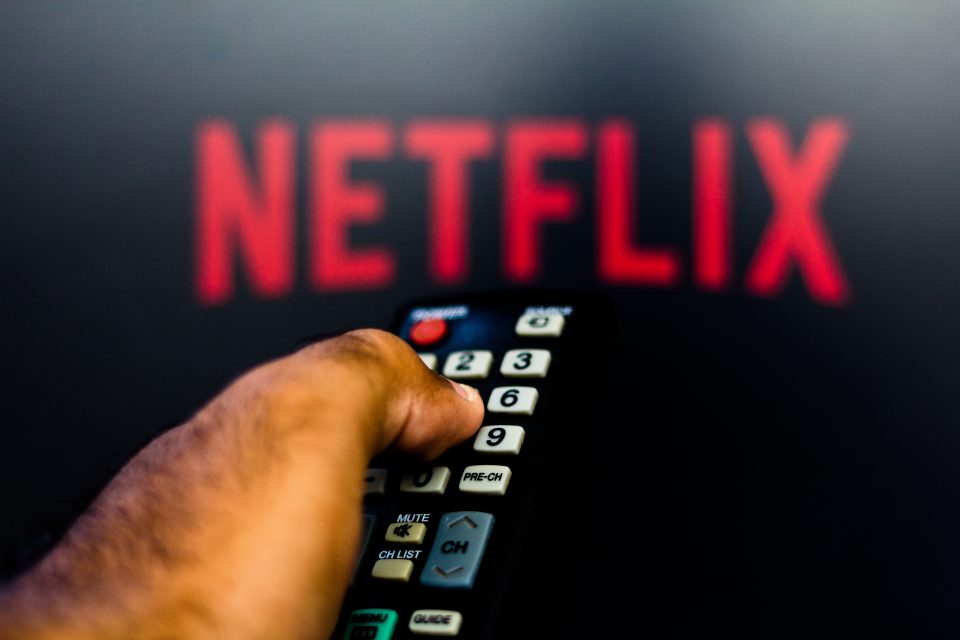Sometimes the biggest disasters in tech happen not because companies try to do something revolutionary, but because they fix something that wasn’t actually broken. Netflix just learned this lesson the hard way by rolling out an interface update that has subscribers so angry they’re starting petitions, threatening cancellations, and basically losing their minds over what should have been a simple app improvement.
The streaming giant began pushing out their new interface on May 19, promising better recommendations and an improved experience that highlights what matters most to users. Instead, they’ve created a user experience nightmare that has people questioning whether Netflix even understands how their own customers actually use the platform.
What makes this situation particularly infuriating for users is that Netflix didn’t just make minor tweaks or add new features. They fundamentally changed how people browse and discover content, transforming a process that used to be intuitive and efficient into something that feels like punishment for wanting to find something to watch.
When improvement becomes punishment
The core problem with Netflix’s new interface isn’t that it looks different, it’s that it actively makes the user experience worse in ways that affect how people actually use the service. The most glaring issue is how the new layout only displays 3 or 4 titles per screen, compared to the previous design that could show 20 or more options at once.
Think about what that means for your typical Netflix browsing session. Instead of being able to scan through dozens of options quickly to find something that catches your interest, you now have to scroll endlessly through a sparse layout that shows you less information and requires more effort to accomplish the same task.
This change transforms Netflix browsing from a relatively quick process into a tedious chore that requires significantly more time and clicking to see the same amount of content. For users who already struggle with decision paralysis when choosing what to watch, having fewer options visible at once makes the problem exponentially worse.
The interface change also breaks the natural flow of how people browse streaming content. Most users want to quickly scan through available options to get a sense of what’s available before making a decision. When you can only see a handful of titles at a time, that scanning process becomes impossible and choosing something to watch becomes frustrating rather than enjoyable.
The psychology of user interface rage
Understanding why people are having such strong reactions to Netflix’s interface changes requires recognizing how deeply ingrained our digital habits become. When you use an app or website regularly, your brain develops muscle memory for navigating through its features and finding what you need.
Netflix users have spent years developing efficient browsing strategies based on the old interface design. They know exactly where to look for different types of content, how to quickly scan through options, and what visual cues help them identify interesting shows or movies. The new interface essentially erases all of that learned behavior and forces users to start over.
This disruption creates genuine frustration that goes beyond simple preference for familiar designs. When companies change interfaces dramatically, they’re essentially asking users to relearn how to use a service they thought they already mastered. That cognitive burden feels like punishment rather than improvement, especially when users didn’t ask for changes.
The emotional response to interface changes also stems from the sense that companies are making decisions about user experience without actually consulting the people who have to live with those decisions. Users feel like their preferences and established workflows are being dismissed in favor of whatever internal metrics or design philosophies the company wants to pursue.
When social media becomes a support group
The explosion of complaints across social media platforms reveals how interface changes can create unexpected communities of shared frustration. Users who might never interact otherwise suddenly find themselves bonding over their mutual hatred of Netflix’s new design, creating a collective voice that amplifies individual complaints.
Twitter has become ground zero for Netflix interface complaints, with users sharing screenshots, venting their frustrations, and discovering that their negative reactions are shared by thousands of other subscribers. This social validation transforms individual annoyance into a broader movement that gains momentum through shared experience.
Reddit communities have also emerged as spaces for users to discuss specific problems with the new interface and share strategies for dealing with the changes. These discussions often evolve beyond simple complaints into detailed analyses of what went wrong and suggestions for how Netflix could fix the problems.
The fact that users are taking time to organize petitions and coordinate complaint campaigns suggests that this isn’t just temporary grumbling about change. These are people who genuinely feel that Netflix has made their experience significantly worse and are willing to invest effort in trying to get the company to reverse course.
The business implications of annoying your customers
Netflix’s interface disaster demonstrates how user experience changes can create real business consequences that extend far beyond negative social media comments. When subscribers start threatening to cancel their subscriptions over interface issues, it suggests that the changes are affecting fundamental aspects of how people interact with the service.
The streaming industry has become incredibly competitive, with multiple platforms fighting for subscriber loyalty and entertainment budgets. In this environment, user experience becomes a crucial differentiator that can influence whether customers stay with a service or switch to competitors offering better experiences.
When Netflix makes its platform more difficult and frustrating to use, it essentially creates opportunities for competitors to attract dissatisfied subscribers who are looking for alternatives. Disney Plus, Amazon Prime Video, Hulu, and other streaming services don’t need to do anything special to benefit from Netflix’s user experience problems.
The timing of these interface changes is particularly problematic because it comes during a period when many streaming subscribers are already reevaluating their subscriptions due to rising costs and content concerns. Adding user experience frustrations to existing price sensitivity creates conditions where cancellation becomes more likely.
The petition that proves everything
The emergence of a change.org petition demanding that Netflix revert to its previous interface represents something unprecedented in streaming service complaints. Users don’t typically organize formal campaigns over app design changes, which suggests that Netflix’s new interface has crossed a line from annoying to genuinely problematic.
The petition’s focus on specific usability issues rather than general complaints about change demonstrates that users understand the technical problems with the new design and can articulate why the changes make their experience worse. This isn’t just resistance to novelty, it’s legitimate criticism of functional regression.
The fact that users are willing to take time to sign petitions, share them with friends, and actively campaign for interface changes shows how deeply the new design affects their daily Netflix usage. These aren’t casual viewers who occasionally use the service, these are engaged subscribers who care enough about their experience to fight for improvements.
The petition also creates a documented record of user dissatisfaction that Netflix executives can’t easily dismiss as temporary grumbling or resistance to change. When thousands of users formally request that you undo recent changes, it suggests that something went seriously wrong with the implementation process.
What Netflix should learn from this disaster
The interface backlash provides Netflix with valuable lessons about how to manage user experience changes without alienating subscribers who have developed strong preferences for existing designs. The most obvious lesson is that major interface changes should be tested extensively with real users before being rolled out globally.
Netflix could have avoided much of this controversy by implementing gradual rollouts that allowed them to gather feedback and make adjustments before forcing changes on their entire user base. A phased approach would have revealed user resistance early enough to modify or abandon problematic design elements.
The company also needs to recognize that efficiency and familiarity are crucial aspects of user experience that shouldn’t be sacrificed for aesthetic improvements or internal business objectives. When design changes make common tasks more difficult or time-consuming, they create negative value regardless of how sophisticated they might appear.
Moving forward, Netflix should consider providing options that allow users to choose between different interface designs or customize their browsing experience based on personal preferences. This approach would let them introduce new features while maintaining functionality that existing users prefer.
The broader implications for streaming services
Netflix’s interface disaster serves as a warning for other streaming services about the risks of making dramatic changes to established user experiences. The intensity of user backlash demonstrates that subscribers have strong emotional investments in how they interact with entertainment platforms.
Other streaming services watching this controversy unfold probably recognize that user interface stability can become a competitive advantage when competitors are alienating subscribers with unwanted changes. Maintaining familiar, efficient browsing experiences might attract users who are frustrated with Netflix’s new design.
The situation also highlights how streaming services need to balance innovation with user preference preservation. While companies need to evolve their platforms and add new features, they must find ways to do so without destroying the workflows and habits that users have developed over years of regular usage.
The Netflix backlash might also influence how other technology companies approach major interface redesigns across different types of applications and services. The lesson is clear that user familiarity and efficiency should be preserved even when pursuing design improvements or business objectives.
The update that updated Netflix into a corner
Netflix’s interface disaster represents a master class in how companies can damage their relationship with customers by prioritizing internal objectives over user experience. The streaming giant took a browsing system that worked efficiently for millions of users and replaced it with something that actively makes finding content more difficult and frustrating.
The subscriber backlash, petition campaigns, and cancellation threats demonstrate that interface design isn’t just about aesthetics or internal metrics. It’s about respecting the time, habits, and preferences of people who choose to pay for your service every month.
The ultimate test for Netflix will be whether they listen to user feedback and make meaningful adjustments to address the problems subscribers are experiencing. The company’s response to this crisis will reveal whether they view customer satisfaction as more important than whatever design philosophy drove these controversial changes.
For Netflix users, the interface controversy serves as a reminder that streaming services are businesses that sometimes make decisions based on factors other than subscriber satisfaction. The power to cancel subscriptions remains the most effective way for users to communicate when companies make changes that significantly degrade their entertainment experience.











